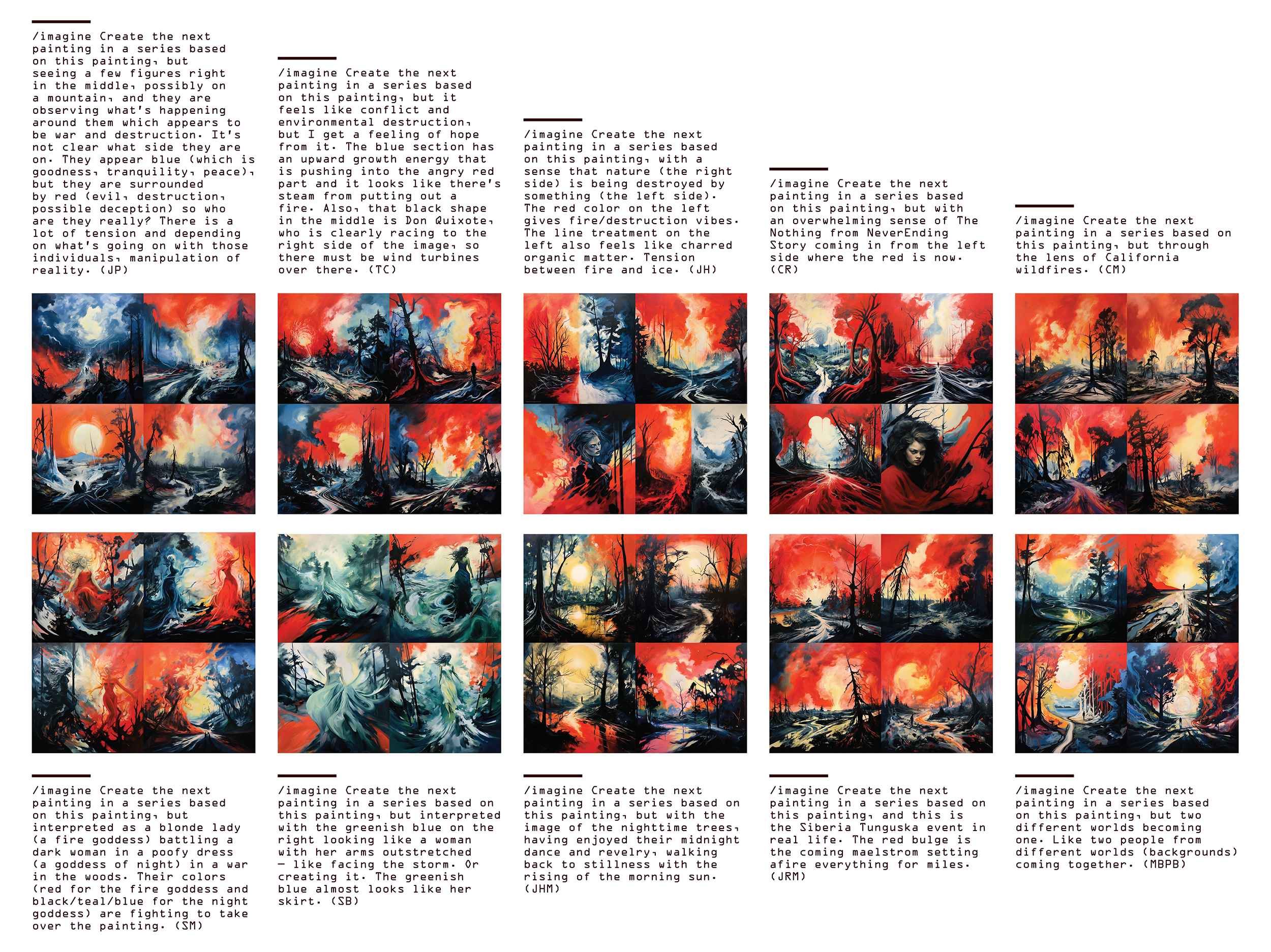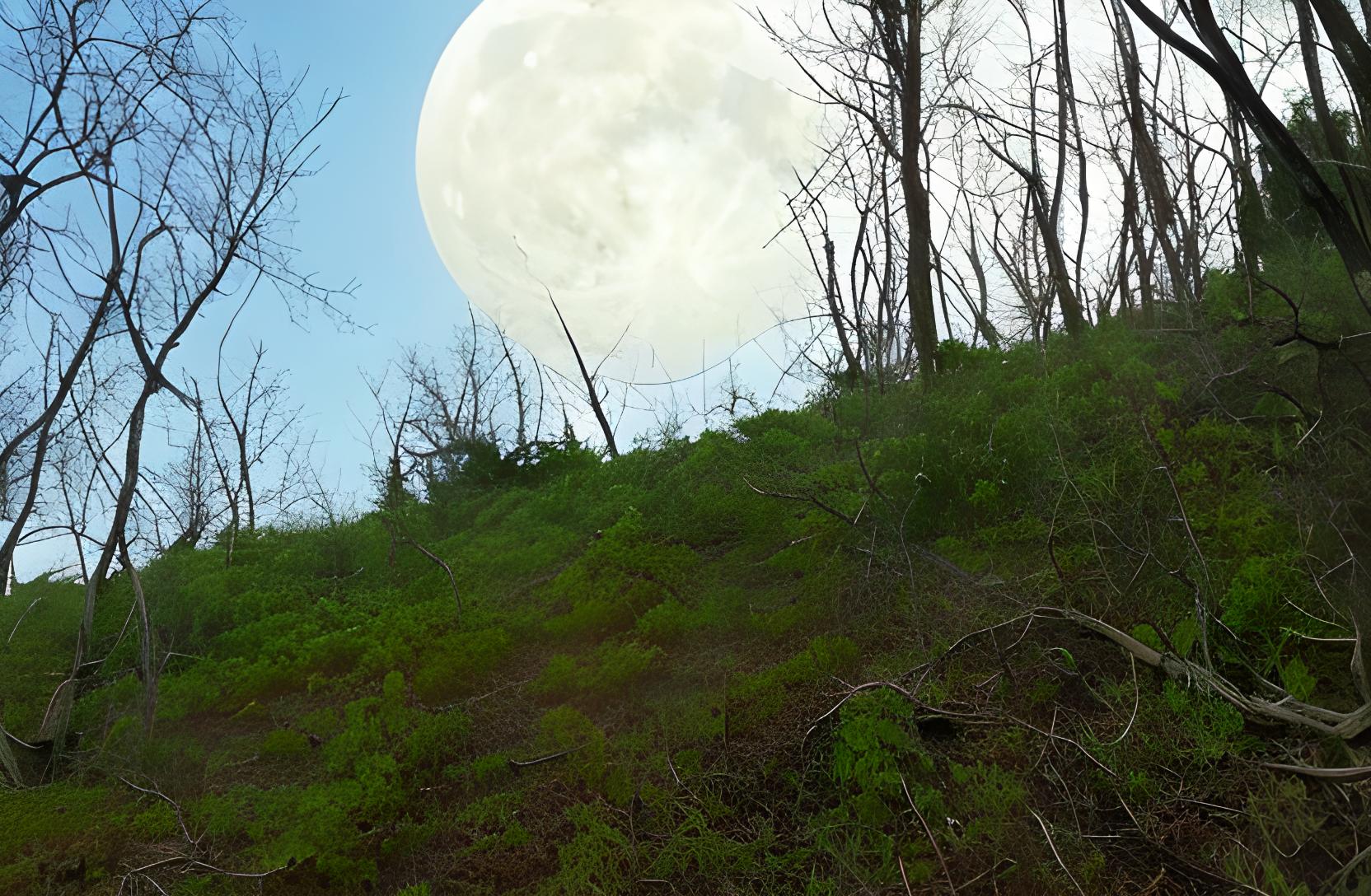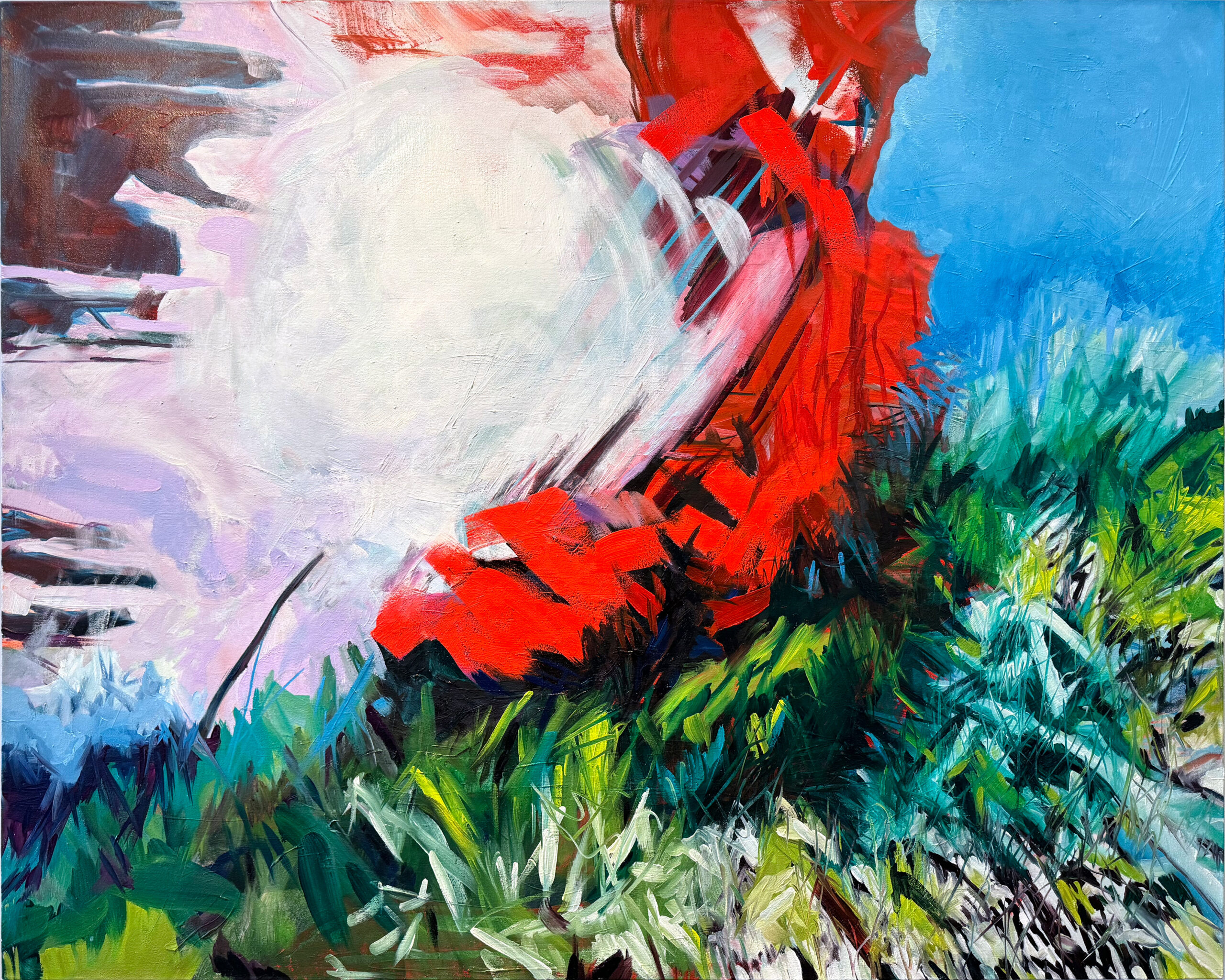September 1, 2024
How I Use A.I. to Create Art
The past couple of days of the holiday weekend have consisted of falling into rabbit hole after internet rabbit hole and reminiscent of how I spent a lot of my time in the early 2000s, when enough online content finally existed to do so. Everything was new and felt exciting and idealistic, from learning how to code websites (like I was doing) to exchanging ideas and getting to know people — albeit in most cases for me not their real names or actual locations — across the globe. A different Before Time. Before A.I. as we know it today and all the fears, misconceptions and garbage it’s produced, along with value. A.I. is a new frontier, but a much different one without idealism about humanity, for the most part.
Remembering this past and consuming so many articles about A.I. and A.I. in art made me think about how I write about the role A.I. plays in my own process, and how I talk about it.
An Article I Read in a Rabbit Hole and My Painting Process
After reading “Why A.I. Isn’t Going to Make Any Art” by Ted Chiang (paywall, but this might be a freebie if you haven’t read your allotment of New Yorker articles for the month yet), I’m thinking maybe I change my “I make art from A.I.” to “I make art from garbage”. I’m joking, a little. The way I’ve used A.I. in my art has never been direct for this reason, other than a few prints to demonstrate the process in a visual, digestible way for those who aren’t familiar with the constant array of A.I. platforms available for image generation.
This was a crowdsourced project. I asked my Facebook friends to comment on what they thought the painting Overwhelming Nothing meant, or meant to them, and fed those comments into Midjourney as text prompts, along with a seeded image of the painting. The results are under or over the text prompt, and you can click the image to make it big enough to read.
In my artist statement I’ve struggled with how to present my process or even if it matters. Does it? I predominately make oil paintings. Painting is so far removed from A.I. and such a totally human thing to do, it’s unrelated. Still, I’m far from the only artist who is using and referencing digital tools or my digital life to create art and it’s worth mentioning as a relevant aspect of my work. (Read Martin Herbert in “A New Realism”, Outland for more on that.) It’s not commenting on the digital as it was in the 90s, when I was a student and using Photoshop and digital references for the first time. Back then I painted through rolls of screen I’d rip off once the oil paint set up a bit to get the big, pixelated look of computer monitors, inspired by the flatness and texture at once. At this point, it’s painting real life. Our lives are digital with impossibly good screen resolution and were even before the pandemic, but especially now after years of Zoom, virtual work, virtual relationships and little contact with others.
How I personally use A.I. isn’t to make art. It’s just part of my art-making process.
Someone COULD create artistic or interesting images with lots of work on the perfect text prompt and feeding both the text prompt and the image back into your A.I. platform of choice. And my entire art degree was about Postmodernism and the lament that nothing we created would EVER be new and the best we could do is comment on art history in an insider way in our work…so isn’t using something that was trained on everything that came before it — at least available on the internet — more of this? Lots of artists have used other artist’s work directly in their own work to make something new.
Copyright is another story, but as far as I know, infringement is taking something directly and claiming the rights to it as if you made it yourself. The actual images or text generated from A.I. cannot be copyrighted — and they really aren’t yours in the same way a new piece you put together with references to other art would be. A.I. doesn’t have intent, it’s answering your question with text or an image. In this case, the product isn’t the art, it’s the question that makes the artist.
I trained my own model on my own images, which gives me a subdivision of image generation based on a set of images I’ve taken, been given, and selected. I write text prompts to generate images based on these, so the process is the same as if I used any other A.I. platform, but the results will always be from that subset of my own collection. (I used RunwayML for one model, but what I used isn’t available anymore, which is the story of any tech.) It’s not just a mashup of some sort. A.I. learns from the images to make new visuals, but what can be new is very limited because the original set it trained on is very small. Sometimes I recognize direct references to a picture I took, and sometimes things I absolutely know aren’t part of the set appear in the results, like the giant moon I knew wasn’t anywhere in the images I included that just showed up. It rose above a scene I did recognize from a shot I took while camping in South Fork, CO. This is one of the more interesting images, and it’s only interesting because the moon showed up, not because of the quality of the image itself.
On the left, the random moon in the A.I. generated image that came from the prompt “I want a dense and lush foreboding forest.” On the right, the painting Will You Find Me? (private collection) that resulted from this image, which I painted over an existing painting.
I write funny text prompts that have nothing to do with an image I’d like to see, or prose, or just thoughts of the day. Sometimes I don’t try to come up with particular visuals I want but sometimes I do, and the images I get are…boring. Derivative. There’s often no depth and terrible composition. I’m not inspired by the images themselves even if they do end up as layers in my Photoshop sketches, which they often do. They are more patterns, or triggers to find a particular image I remember taking to use in my sketch, or a prompt for a memory of mine.
I’m inspired by the process, not the product.
A.I. has no intent of its own, so the images I get in response to my bizarre prompts have no human goal.
Sometimes I take my strange text prompts out on the road and feed them into regular image gen platforms to see what I get. I’ve learned a lot about how A.I. “thinks”. Maybe. One of the things I’ve learned is that A.I. will ALWAYS put some human form into the image requested, no matter how normal or offbeat the text prompt is or even if I include a direct order NOT to put a human in the results. I think it “thinks” (it’s NOT thinking like we think) “Well, you’re a human. You must want something with a human in it.” Or maybe it’s because it has learned from the other requests for Elf women with big shiny PG-13 breasts…lots of young male gamers hanging out on Discord/Midjourney.
If I specify “make a painting” before the rest of my text prompt request, I’ll get an image without a human form. The images on which it’s been trained have informed A.I., at least, that paintings often do not have human forms. Sometimes I’ll seed a request with a picture of my painting I’m working on and ask for a change or an idea, but I’ve never particularly been inspired from the results, which again…not that great. I just like asking another brain that isn’t human to see what happens. It’s a bit like rolling a Magic Eight Ball while asking what to do with your life, and then making decisions based on actual experience and knowledge. Reading your horoscope even though you don’t believe they are true, or putting on lucky socks for a game because your team won when you wore them last time.
Think A.I. is Going to Take Artists’ Place? Hunh?
A.I. IS NEVER GOING TO REPLACE ARTISTS.
REPEAT. AFTER. ME: A.I. IS NEVER GOING TO REPLACE ARTISTS!!
Spread misinformation to an apocalyptic degree? Sure! Aid the worst of humanity in war with a tool that has no empathy or decision-making skills? Yup. Aid us in a cure for cancer and other diseases? Maybe. It’s a tool in all those cases, with no intent. A.I. has no intent of its own. It’s not going to wake up one day soon and decide to make a painting or write a novel. It’s not going to decide anything or even wake up, at least not any time in the near future.
I think if it did, making art would be the last thing on its logical, computer-based not-mind, anyway, but that’s a different post. In the same article I quoted above, Chiang says:
“Art is notoriously hard to define, and so are the differences between good art and bad art. But let me offer a generalization: art is something that results from making a lot of choices.”
And
“An artist—whether working digitally or with paint—implicitly makes far more decisions during the process of making a painting than would fit into a text prompt of a few hundred words.”
A.I. is different from your standard computing and apps in that it learns, but it only learns from many, many examples to complete a task it’s asked to do. This is not creativity and it does not lead to decisions. Unlike a human studying art, it will never look at a painting beyond the image that is on it and be able to make a jump or an unconscious or conscious decision to create something inspired of its own. A.I. has been used in a way it hasn’t been meant to be used to create interesting images, or like me, something to riff on to make art, but it’s meant to be used generate text and images quickly that best match the text prompt.
A.I. does replace some art that I wouldn’t term “real” and people might disagree with me. Stock art — well, once it makes people without seven fingers or more on each hand. Before A.I. made lots of garbage images, millions of websites have used staged, terrible images of people that I would also term garbage images, even though someone with a camera made and got paid for them, in theory. Every corporate website has content templates that require or at least benefit from an image to publish a post, and as a person who made the template and created the post in the past, I spent a LOT of my life looking for stock art to go along with an article. It’s not that the image is important because of what it is, it’s part of the design and breaks up or enhances text. People complain because of the vast amount of garbage image and text A.I. creates, but if there wasn’t a need — well, “need” is strong, let’s say “expectation’ for it, it wouldn’t exist. The need for garbage image and text predates using A.I. to create it. It just can happen faster now and for free and without copyright infringement. That kind of imagery and text are not art and I don’t think they ever were, human-created or not.
So…How do I Really Use A.I. in my work?
Chiang’s New Yorker article ends with:
“Whether you are creating a novel or a painting or a film, you are engaged in an act of communication between you and your audience. What you create doesn’t have to be utterly unlike every prior piece of art in human history to be valuable; the fact that you’re the one who is saying it, the fact that it derives from your unique life experience and arrives at a particular moment in the life of whoever is seeing your work, is what makes it new.”
I use A.I. to make something new in oil paint because A.I. is a new influence on daily life. It makes my paintings unique to my experience in this century, right now, and as a technology-focused person. I also think that all my digital influences coming together to make something as historically weighted and irrefutably “high art” as oil paintings is funny and borders on ridiculous.
And lastly:
“We are all products of what has come before us, but it’s by living our lives in interaction with others that we bring meaning into the world. That is something that an auto-complete algorithm can never do, and don’t let anyone tell you otherwise.”
I agree Chiang throughout the article, and agree that “real art” or fine art cannot be created without intent, decisions, and the ability to start from a place that isn’t millions and millions of examples directly informing the end result quite in the way A.I. works. It made me think my entire premise of “I use A.I. to create paintings.” is misleading. I don’t. I use the process of creating text prompts and training a model and learning new A.I. platforms and new technology to think about the oil paintings I’m going to make next. It’s the same process other artists would have used to document real life using the tools available. My real life and tools are just different.
You can be really into A.I. and still think artists deserve recognition and money for their art. I quoted Ted Chiang’s article Why A.I. Isn’t Going to Make Art from the New Yorker and you can buy a subscription. I also quoted Outland and that’s free, but you can subscribe. I have prints. Your local artists would love support.









